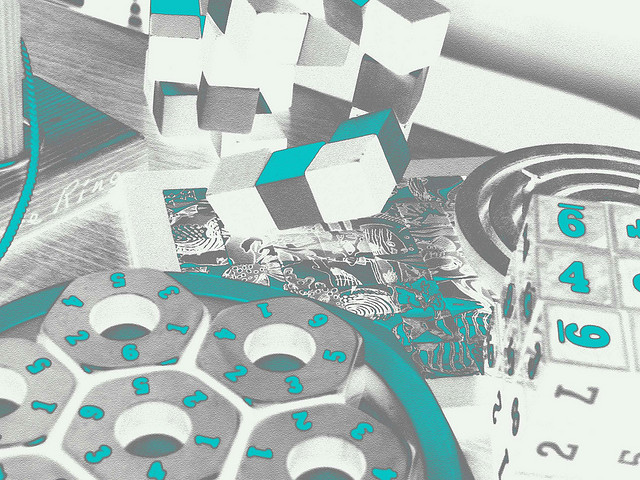 My views on design stem from my personal experience. My background is of a visual arts practitioner, who ran a small business for many years, but who now conducts research from a practitioner standpoint for both the arts and industry. My research team undertakes research that is primarily applied, and is concerned with process. In a digital age I deal in the physical artefact, which can be made either by autographic means or by digital technologies such as 3D printing. In this context we therefore need to define design beyond the purely visual; my feeling at the moment is that design relates not only to the visual appearance but crucially to an innate understanding of the materials and processes that go into creating an object.
My views on design stem from my personal experience. My background is of a visual arts practitioner, who ran a small business for many years, but who now conducts research from a practitioner standpoint for both the arts and industry. My research team undertakes research that is primarily applied, and is concerned with process. In a digital age I deal in the physical artefact, which can be made either by autographic means or by digital technologies such as 3D printing. In this context we therefore need to define design beyond the purely visual; my feeling at the moment is that design relates not only to the visual appearance but crucially to an innate understanding of the materials and processes that go into creating an object.
This view of design from the practitioner standpoint, has gained acceptance by many Blue Chip companies, for example we currently undertake research in partnership with, Hewlett Packard, Renishaw, Denby Potteries and Johnson Matthey. All of whom recognise we bring a unique view to the table. John Meyer, Ex head of HP Research Labs printing division in Palo Alto, one of our early HP sponsors always said, ‘If I want computer science I can go to Stanford, you offer me something different.’ It is that ‘something different’ that we need to quantify and promote.
Design, contributes to solving industrial and business problems by being an integral part of the solution, it not something to be considered later or bolted on afterwards. In a rapidly changing global environment, the best way of staying ahead of the competition is to offer a better quality product. The primary reason Apple is so successful is that their product looks and feels right. That happens through a tacit understanding of the material qualities involved in creating such a product and incorporating good design from the outset.
The best way of describing how that works is to give an example: I have spent two years on a Knowledge Transfer Partnership with a company who are market leaders in clean room flooring. Their profits have increased by over fifty per cent in the period, due to a radical overhaul of their product; in the outset they wanted to add printed company logos and floor graphics to their product. Initially their primary product could be viewed as just a blue sticky mat with aluminium edges that nobody took any notice of, the notion of design to the company at the time did not seem relevant. However after design input, the final product stands head and shoulders above the competition, not only is the product more durable, with a lower edge profile and crucially, incorporates integral floor graphics that replace the aluminium edging. The design also includes time sensitive date stamping by informing customers when the product is due for replacement. Hence the fifty per cent increase in turnover in less than twelve months from the product launch.
In this example, my role as a designer was simply to take a lateral approach to the problem. The company needed to apply a date stamp to the flooring – in the old design, this was simply a sticker stuck to the surface of the mat, which could easily be removed. Our design innovation was to put the date stamp under the mat with a clear window to view the date. This meant the only way to change the date was to remove the mat from the floor. Sales leapt because the life of the mat was instantly time limited. Our solutions lay in parallel industries and had already been created elsewhere. By needing to add a visual element to the process, we were able to change company culture to take on board process changes that they would not have considered through a traditional linear development processes.
Increasingly we are in a global marketplace, our competition is no longer national, but international. Our products and services can be delivered from anywhere, so unless what we make is distinctive we lose our competitive edge. Britain’s image around the world is based on a perceived quality and heritage, with an understanding that our design and visual arts tradition at least since the 1960’s is innovative and eclectic. This view is primarily fostered because of our education system, which has created an art school system of training that has produced some of the world’s greatest designers. For example Jonathan Ive, Alexander Macqueen and James Dyson all came through a method of teaching unique to the UK embedded in art institutions (many of whom are part of University Alliance) which does not exist in many of the research intensive universities. It is crucial we continue to nurture this ethos and maintain this distinctive approach to teaching, which must not be eroded by bureaucratic standardisation.
We are currently in the midst of a transforming digital age and for the last ten years much of the thought and direction of digital technology has been seen as integral to the communications industry. This can be summed up by a quote made by ‘Wired’ Magazine as far back as February 2010 with a feature article by editor Chris Anderson entitled ‘In the Next Industrial Revolution, Atoms Are the New Bits’.
Perhaps the most perceptive comment within the article is the following:
‘Here’s the history of two decades in one sentence. If the past ten years have been about discovering post-institutional models on the web, then the next ten years will be about applying them to the real world.’
Fundamentally the world exists as a physical entity, so we need to consider what the digital physical future may bring. If for example the future follows the post-institutional web model, into the physical world and mass customisation becomes a prevalent reality, then the role of designer will not only expand, it will become ever more crucial. If every object becomes different to every other object, and tailored to the user, then every object has to be individually designed.
For too long design has been seen as something that is glued onto a product or service after it has been developed. We need to develop new models of design integrations that improve upon the best of the UK’s advantage in design teaching, whilst we need to be sure we are also teaching a fundamental understanding of materials and making from a practice led approach to design that is fully integrated with new technology. Only then will we build upon that difference that makes design both important and distinctive globally from other disciplines.




